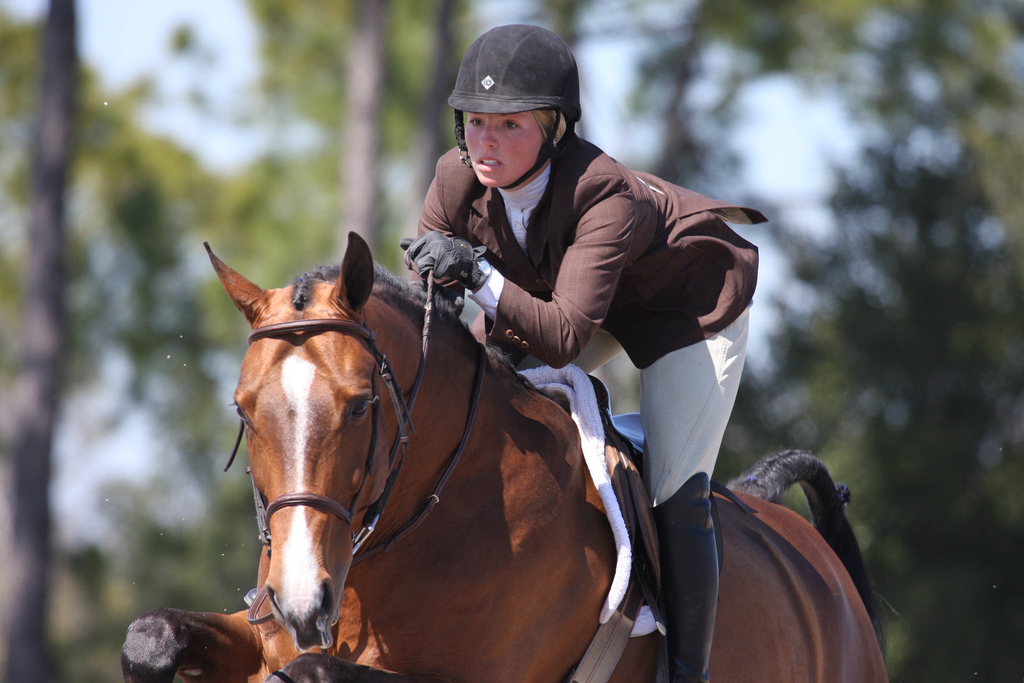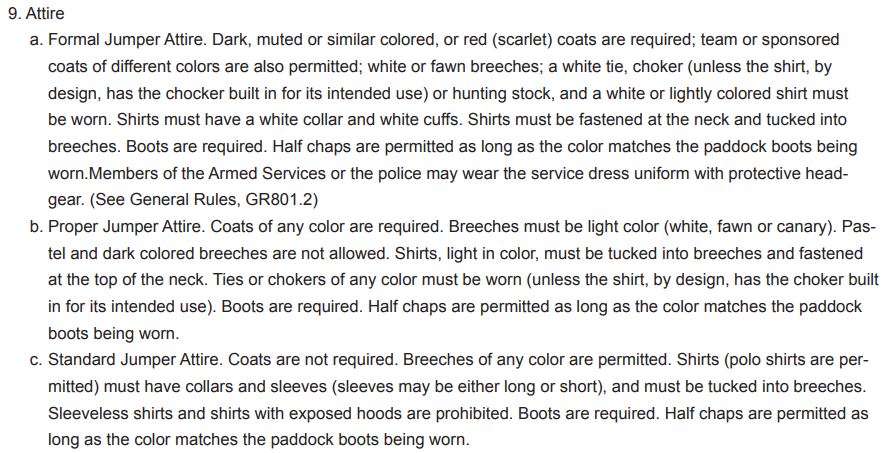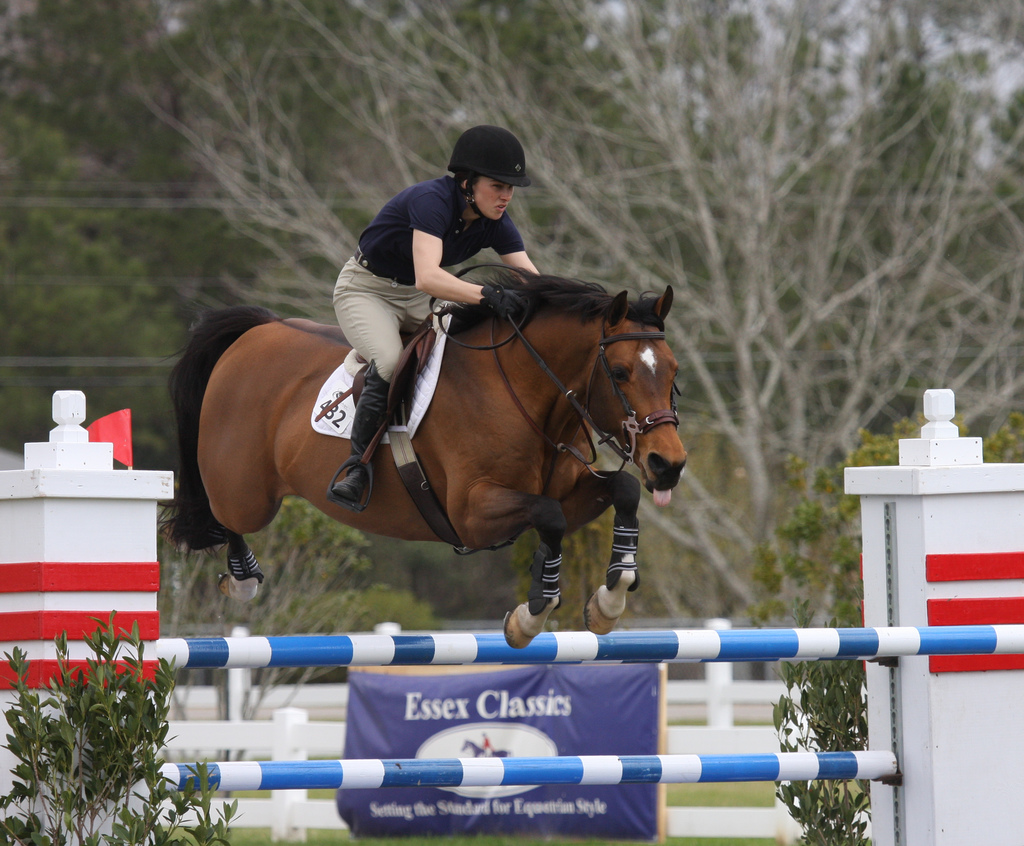
An impeccably turned-out rider. PC: S. Carter/cc/flickr
We love swapping jumper fashion ideas on Jumper Nation, especially if there’s a way that we can pinch a penny and still get you in the ring looking and feeling like a million bucks.
But we also want you staying on the up and up with the officials and staying within the boundaries set by the USEF for ring attire. We spoke with Dana Frank, a USEF and FEI Level 1 Jumping Steward, to get the full lowdown on attire expectations and what to expect if there’s a problem.
First off, she sagely suggested going straight to the USEF Rulebook for Jumpers. The most important thing to know is that there are THREE main distinctions in attire: Formal, Proper, and Standard.
Here’s exactly how they appear in the rulebook (as of 8/23/2017 ):

If your class calls for formal attire, you’re definitely going to want to store your show-stopper for another day.
“According to this rule, pink, bright blue, etc, are not appropriate attire for a class with these specs,” Dana told us. Follow the George Morris rules of tradition and stick to black, navy, dark gray, or a deep forest green options or similar. Only white or fawn breeches are acceptable at this level, and your shirt must have a white collar and white cuffs.
For proper attire classes, you can stretch your legs a bit – coats of any color and shirts of any color are kosher, so long as your shirt has a collar and tucks in.
How Do I Know What My Class Requires?
Every prize list must outline explicitly which divisions require which attire. Often evening classes, championships, and classics will require formal attire, but some shows might require formal attire all week. You should ALWAYS check your specific show’s prize list for guidelines.
Some shows will also require that riders be in at least proper attire to walk the course, and this too will be outlined in the prize list. Generally, it never hurts to go in the ring and present yourself to the judges looking anything but your very best.

Even when your class calls simply for standard attire, it’s a good idea to go in looking your best (and with game faces on, as seen here!) PC: S. Cart/cc/Flickr
If ever you’re confused about what the requirements are for your class or you’re worried your coat might be in the gray area of “muted” (which is admittedly a vague word), you can always address a steward directly, contact the show office in advance, and we would suggest always having a conservative backup shirt and coat on hand. (good for the those epic ringside green slime emergencies, anyway!)
If there is a problem, we asked Dana what to expect. The rules sound fairly stiff:
“JP111.9.e. In cases where the above requirements are not followed, the penalty for a first or minor offense will be a warning and for repeated violations by the same exhibitor at the same event, the penalty may be elimination.”
While different stewards are going to each handle these scenarios differently, we asked Dana specifically what she would do if she were concerned about a potential violation, and she gave us this response:
“As a steward, I would snap a pic of the coat or radio up to the judge if they have a view of the schooling ring and ask if it was okay. If they don’t have a problem with it, I don’t. If they said no, I would call the rider over and tell them and give them the option to change their coat or risk DQ. I can’t make them change, only let them know it’s inappropriate according to the class specs.”
Dana’s course of action is a generous one, and a courtesy, not a guarantee. It’s important to follow the rules not only to save your own hard-earned competition week from disaster, but also to respect the show, the officials, and your fellow competitors.
Follow the rules of good fashion, have fun with it, and Go Jumping!
